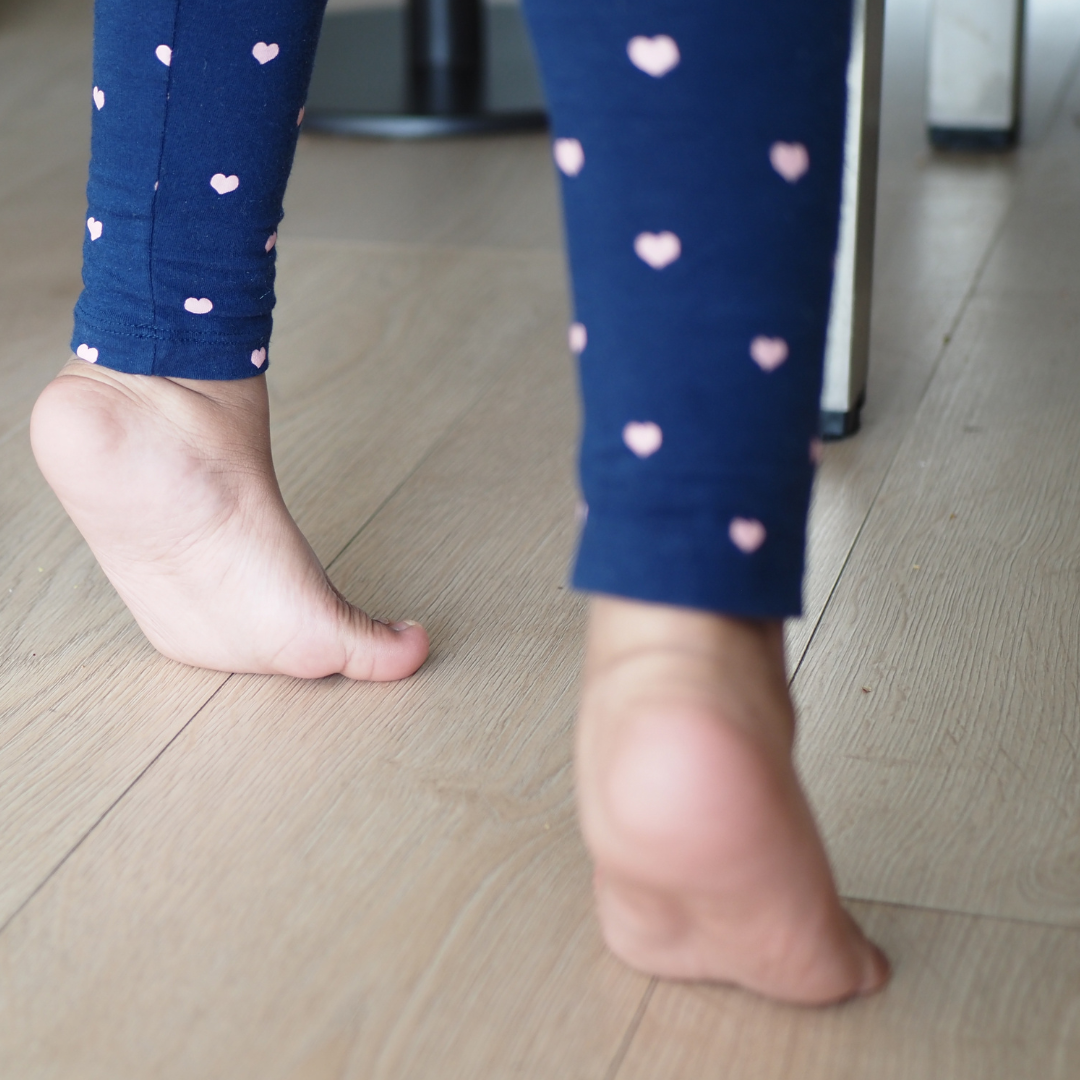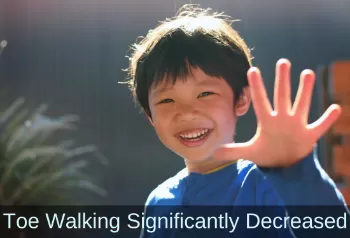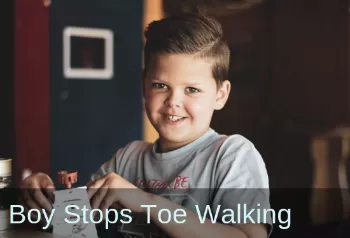Toe Walking
Addressing Toe Walking with Primitive Reflex Integration Activities
 by Sonia Story, M.S.
by Sonia Story, M.S.
Did you know there is research showing that toe walking is associated with components of a retained primitive reflex? When it is active, or unintegrated, the Tonic Labyrinthine Reflex (TLR) appears to be linked to toe walking in cases of autism (Accardo & Barrow, 2015).
Retained primitive reflexes can hinder our postural control and gait, so it makes sense that they may be a factor in toe walking. Most likely there are more reflexes than just the TLR that are retained when we see toe walking.
While there can be other factors besides just retained primitive reflexes involved in toe walking, the good news is that using neurodevelopmental movements to mature primitive reflexes appears to decrease toe walking for many children!
See below for inspiring case studies and a video (4 min) about using neurodevelopmental movements to reduce toe walking
This little boy gained better foot function and sensory integration, and his toe walking diminished. Find out how primitive reflex integration helped with these gross motor and sensory processing issues.
This kindergartener, diagnosed with Autism, had always walked on his toes, a tendency that increased when he became excited or anxious. Read how, after less than a week of doing primitive rhythmic movements, there was no toe walking for the first time ever!
This student's toe walking was so severe, he had one year of serial casting to minimize plantar flexion and increase the length of his Achilles tendon, a measure that was effective for less than 6 months. The plan was for more surgery but, fortunately, innate rhythmic movements proved effective before that happened. This case study not only highlights improvements with toe walking. but dramatic behavioral improvements as well.
Peggy McCahan, OTA/L is a school-based therapist who used movements from the Brain and Sensory Foundations course for students who were "perching" and toe walking. Watch Peggy's brief and inspiring video to see how she was able to provide help for her students.
See more case studies related to toe walking.
Reference
Accardo, P. J., & Barrow, W. (2015). Toe walking in autism: further observations. Journal of Child Neurology, 30(5), 606-609.
Sonia Story, M.S. has been teaching neurodevelopmental movements since 2006.
Sonia developed the Brain and Sensory Foundations program to provide comprehensive training in neurodevelopmental movements—combining innate rhythmic movements, play, primitive reflexes, and postural reflexes.
She earned a Bachelor's degree in biology/psychology and a Master’s degree in Movement Sciences. She is the author of The Importance of Reflex Integration and the Evidence eBook, giving the rationale and evidence basis for using neurodevelopmental movements for helping with challenges such as ADHD, Sensory Processing Disorders, anxiety, emotional dysregulation, visual skill deficits, poor social skills, gross and fine motor delays and other neurodevelopmental and behavioral disorders.
Her work is featured in numerous podcasts, summits, and conferences, and in the books Almost Autism: Recovering Children from Sensory Processing Disorder; Special Ed Mom Survival Guide; Family Health Revolution; and Same Journey, Different Paths—Stories of Auditory Processing Disorder.
Sonia’s mission is to help children and families experience the profound benefits of neurodevelopmental and integrative movements for more functional and fulfilling lives.





